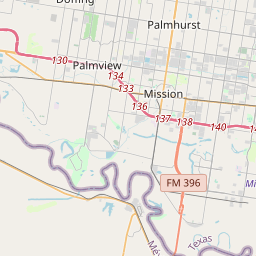City of Pharr
Historical marker location:






For many centuries, nomadic Coahuiltecans lived in the Lower Rio Grande area. In the 1500s, Spanish explorers came through the region, and the Spanish government began to colonize both sides of the river by the late 1700s. At the close of the U.S.-Mexico War in 1848, the Rio Grande was established as the official boundary.
In 1909, John C. Kelly, Henry N. Pharr, W.E. Cage and R.C. Briggs formed the Pharr Townsite Company, platting and registering the new town. Kelly donated lots in the original plat for early churches, including the Methodist, Baptist, Catholic, Episcopal and Presbyterian denominations. Pharr schools began in 1911, and the community later joined with San Juan and Alamo to create the Pharr-San Juan-Alamo School District.
The city founders were also involved with the Louisiana-Rio Grande Canal Co., organized in 1910 to furnish irrigation and domestic water to 40,000 acres in the Pharr area by means of a Rio Grande pumping plant. The water system led the economy to shift from ranching to crop production, and the railroad, which came through the area in 1905, made it possible to ship produce around the country.
The city of Pharr was incorporated in 1916. Given its location at the intersection of two major developing highways and the growth of commercial transportation, Pharr became known as the "Hub City of the Valley." Agricultural shipping and packing businesses were mainstays in the city economy.
With the continued growth of the Lower Rio Grande Valley, Pharr remains a vital business center, and an international bridge now provides an important commercial link to Mexico. (2004)
As one of the most visible programs of the Texas Historical Commission (THC), historical markers commemorate diverse topics in Texas history, including: the history and architecture of houses, commercial and public buildings, religious congregations, and military sites; events that changed the course of local and state history; and individuals who have made lasting contributions to the state, community organizations, and businesses.
The University of Texas at Austin, founded in 1883, is one of the largest universities in the United States and has produced many notable alumni, including several U.S. presidents.
In the 16th century, Spanish explorers arrived in the region, bringing new settlers and establishing missions. During this time, the land belonged to Spain and was considered a part of New Spain. The Spanish influence can still be seen today in the names of many cities and landmarks in Hidalgo County.
In the 19th century, Mexico gained independence from Spain and Hidalgo County became part of the Mexican state of Tamaulipas. However, with the Texas Revolution in 1836, the region became a part of the Republic of Texas and was eventually incorporated into the United States with the Treaty of Guadalupe Hidalgo in 1848.
During the late 19th and early 20th centuries, Hidalgo County experienced significant growth due to the expansion of the railroad industry and the development of irrigation techniques. This led to the establishment of prosperous agricultural communities, with cotton being the main cash crop. Over time, the population became increasingly diverse, with a mix of Mexican, Anglo-American, and other immigrant communities.
Today, Hidalgo County is a thriving region known for its vibrant culture, strong agricultural industry, and close proximity to the US-Mexico border. It is home to cities such as McAllen and Edinburg, as well as popular tourist attractions like the Santa Ana National Wildlife Refuge and the International Museum of Art and Science. The county continues to evolve, with a growing population and a dynamic economy driven by healthcare, education, manufacturing, and international trade.
Hidalgo County Timeline
This timeline provides a concise overview of the key events in the history of Hidalgo County, Texas.
- 1749 - The area that is now Hidalgo County is explored by Spanish explorers.
- 1767 - The Spanish government establishes a settlement called Reynosa in the area.
- 1821 - Mexico gains independence from Spain, and Hidalgo County becomes a part of Mexico.
- 1836 - Texas declares independence from Mexico, and Hidalgo County becomes a part of the Republic of Texas.
- 1848 - The Treaty of Guadalupe Hidalgo is signed, ending the Mexican-American War, and Hidalgo County becomes a part of the United States.
- 1852 - Hidalgo County is officially established as a county in the state of Texas.
- 1909 - The city of McAllen is founded.
- 1944 - The Hidalgo County Courthouse, a historic landmark, is completed.
- 1954 - The Hidalgo County Water Improvement District No. 4 is created to provide irrigation and drainage services.
- 1970 - The population of Hidalgo County reaches over 200,000.
- 2001 - The new Hidalgo County Administration Building opens.